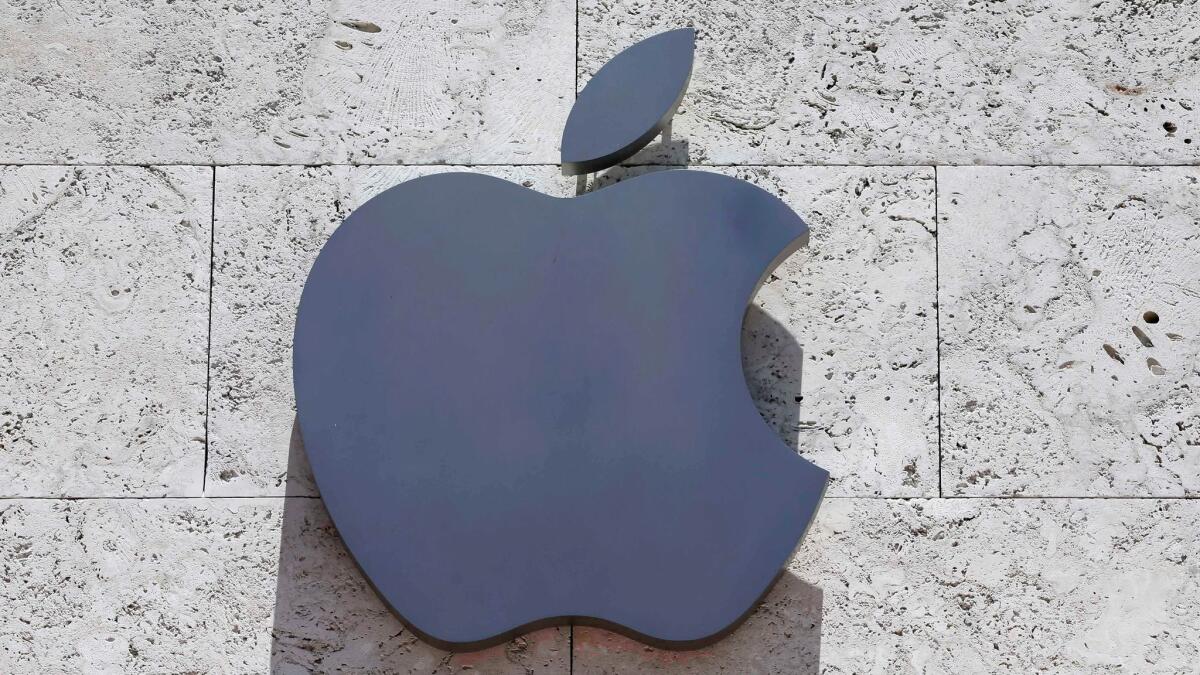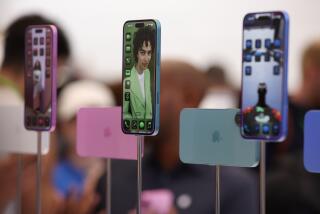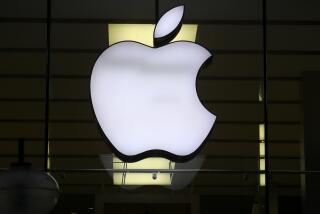Apple’s new iPhone will probably cost more than a MacBook Air

- Share via
Is a phone worth a mortgage payment? That’s what consumers may be asking themselves when Apple unveils its newest iPhone on Tuesday.
The latest iteration of one of America’s most indispensable products is expected to come in at a record price befitting a laptop. Analysts expect the entry-level 64-gigabyte handset to cost about $1,000, the 256-gigabyte version to cost about $1,100 and the top-of-the-line 512-gigabyte model to cost about $1,200.
That could make the iPhone 8 the most expensive mass market cellphone, ahead of the current priciest device, the recently released $950 Samsung Galaxy Note 8. It would also cost at least as much as an entry-level MacBook Air.
Apple is expected to showcase the 10th-anniversary edition of the iPhone at another of its much-hyped product debuts, the first at its new space-age headquarters in Cupertino, Calif. Apple typically announces monthly payments for new devices at such events, which would make a $1,000 phone more palatable.
Still, the jaw-dropping price estimates — the least expensive new model is expected to cost about $150 more than the most expensive current model — reflect Apple’s desire to recapture its status as the maker of luxurious gadgets worth flaunting. And they come at a time when the company is leaning on its signature product more than ever to reverse slowing revenue growth.
“Apple will play up the exclusivity of this device,” said Wayne Lam, an IHS Markit analyst. “They want to reestablish themselves as a tastemaker.”
Apple will play up the exclusivity of this device. They want to reestablish themselves as a tastemaker.
— Wayne Lam, IHS Markit analyst
More people are using smartphones like personal computers, relying on them to run complex apps, conduct business and watch videos, Lam said. That’s inspired bigger and increasingly powerful phones that cost more to produce.
That’s one reason prices for top-of-the-line smartphones have been creeping upward in recent years. An iPhone 7 Plus and Samsung Galaxy S8 set consumers back between $800 and $850 last year, according to according to International Data Corp., which tracks the mobile phone industry.
In 2015, a Samsung Galaxy Note Edge and iPhone 6 plus cost just under $800 each. And in 2013, a Samsung Galaxy S4 and an iPhone 5 was priced anywhere between $650 and $750.
“We’ve come up, but slowly,” said IDC’s mobile tracker program director, Ryan Reith. “So the jump to $1,000, $1,200 would be a large leap.”
But the world’s most valuable company based on market capitalization has reason to exact as much profit as it can from its flagship gadget.
Apple has faced mounting competition from South Korea’s Samsung as well as from Chinese smartphone makers Huawei, Oppo and Vivo, which have all had years to catch up to Apple’s technology.
That’s contributed to slower sales of the iPhone, a product that accounts for two-thirds of the company’s revenue.
Apple sold $137.7 billion worth of iPhones in 2016, down 12% from 2015, when the company netted $155 billion in iPhone sales. Through the first three quarters of 2017, Apple has sold $112.4 billion worth of iPhones.
Part of the slowdown is attributed to a slump in what the company calls Greater China, a region that includes mainland China, Hong Kong and Taiwan. Apple’s revenue there fell to $48.4 billion last year, down 17% from 2015. The region is responsible for one-fifth of Apple’s global revenue.
Experts say the iPhone doesn’t command the same cachet in China as it once did — appearing too attainable in a country inundated with luxury goods. China, after all, is the place where the $20,000 version of the Apple Watch sold out in less than an hour.
Apple’s growth prospects in China stand to benefit from the iPhone 8’s expected design, the first significant overhaul of the device since the larger-sized iPhone 6 Plus was introduced in 2014.
Among the anticipated changes are a touchscreen that encompasses the entire face of the phone, beveled edges, an upgraded camera, a faster processor, facial recognition and no home button.
Those new bells and whistles are partly what’s driving up the price, said Lam of IHS Markit.
Another driver is Apple’s desire to maintain its healthy profit margins. Analysts believe that the company will continue to enjoy the same industry-leading profit margins of about 33% on the upcoming iPhone. By comparison, most other handset makers maintain profit margins of about 20%, Lam said.
The iPhone 8 comes during something of a lull in global smartphone sales. New purchases are expected to climb 1.7% this year, down from 2.5% in 2016 and 10.5% in 2015, according to International Data Corp.
But analysts expect a rebound to 5% in 2018as consumers begin upgrading their phones.
“We’re close to a refresh cycle,” said Reith of IDC.
Twitter: @dhpierson
ALSO
Tesla is adding charging stations in city centers
How a potato chip entrepreneur in Lebanon became a big supporter of L.A. tech start-ups







